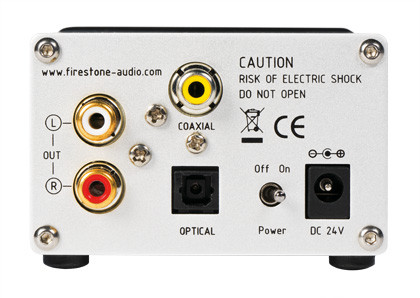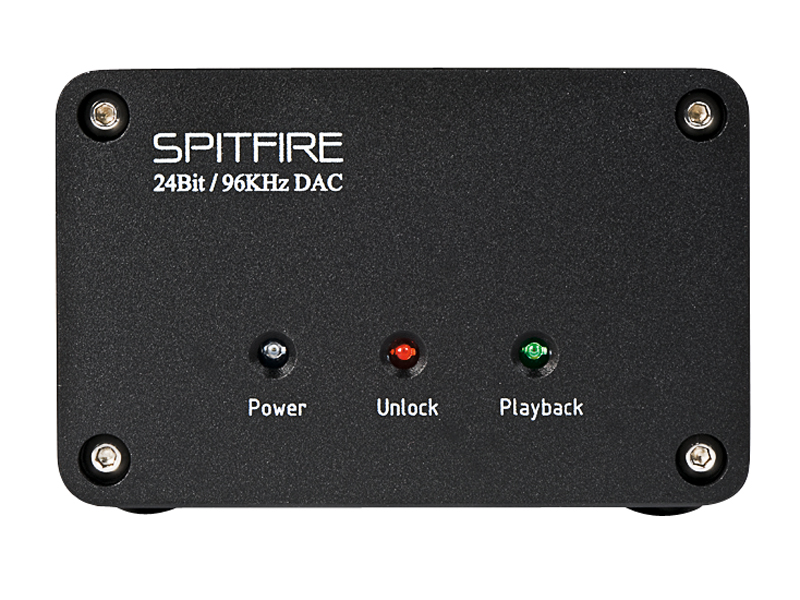TechRadar Verdict
Bass is very good, extended and also clear, but the slightly bright subjective balance can become a little wearing and detail is not always the best around. Rather sensitive to the digital source too
Pros
- +
Very good bass
- +
Neutral tonality
Cons
- -
Slightly bright balance
- -
Detail not always the best
Why you can trust TechRadar
Its rather involved name may conjure up images of rubber tyres and the Battle of Britain, but the Firestone Spitfire DAC oozes simplicity in terms of performance and design.
In fact, many a design-conscious household would probably be very happy to house one of these as their DAC of choice.
It's supplied with the usual 'wall wart' power supply, but an optional upgrade is also available for £103 in a matching case. And, since we were also sent one of these, that's how we conducted most of the test.
To reiterate, the Spitfire is simplicity incarnate, with no front-panel controls and just a single digital input (both flavours, though only one can be used at once), plus a single stereo unbalanced output at the rear. Indicator LEDs do, at least, tell you what's going on.
This can be useful and we did notice that our sample sometimes seemed to lock up, if initially powered up with no source connected. All three LEDs light up, but switching off and on again invariably fixed it.
Circuitry follows a straightforward arrangement, with a digital receiver chip and DAC both from Texas Instruments and a minimum of analogue output signal path based around a high-performance op-amp.

The optional power supply is a linear type, based on a small frame transformer, with simple linear regulation. It's ingeniously assembled so as to use the whole case as a heatsink and connects to the DAC via a supplied cable of about a handspan length.
Sound quality
We used a USB-S/PDIF converter box from Trends Audio as an interface since there's no USB input and the computer we were using as a source for our blind listening session doesn't have an S/PDIF output. We first checked it for bit-perfect data passing and low jitter so the sound has plenty of weight to it and some good resolution too.
A couple of listeners commented that the presentation is just a little on the bright side, but in a good way, making for a lively sound rather than being tiring or strident. Otherwise, tonality seems neutral and well balanced.
There's more to bass, though, than just its tonal relation to the rest of the spectrum. The ideal hi-fi component should have extension with body, clarity and tunefulness.
On the whole, this DAC seems to manage an impressively close approach to that ideal. For instance, it manages the deep heartbeats that begin Dark Side of the Moon effortlessly and with real weight, but it also does a great job of reproducing the low notes on a piano, which can easily come out as a tuneless dull thud. Drums of all sorts have loads of impact and a very immediate presence, while low melodic instruments are easy to follow.
For all that, the slight brightness can at times take the shine off the bass, or at least divert the listener's attention. This is one of those things that will surely vary between listeners. What might not vary quite so much is a slight lack of insight – a very small degree of veiling that can also reduce the scale of stereo images. We found this a little less marked when using a CD as a source, but it's still present.
Ironically, and Firestone won't thank us for saying this, we felt the detail was a little better using the free power supply, though this did cause something of a trade-off in bass quality.
Still, it's a capable and likeable product, even if it's not up there in our top three.
Follow TechRadar Reviews on Twitter: http://twitter.com/techradarreview
